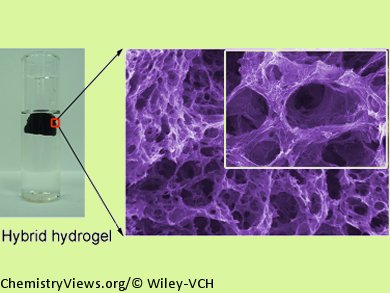Supercapacitors are power devices capable of being fully charged and discharged in seconds. Hence, they are potentially useful in applications requiring short-term power boosts, such as emergency doors, hybrid electrical vehicles, and uninterrupted power sources.
Shi Zhang Qiao, University of Adelaide, Australia, and co-workers have succeeded in the fabrication of a hierarchically porous graphene–Ni(OH)2 hybrid hydrogel, with both out-of-plane macropores and in-plane mesopores in its structure. The hybrid hydrogel exhibits excellent electrochemical performances with high capacitance, and excellent rate capability and stability; these properties originate from the synergistic effect of porous graphene and Ni(OH)2, and the hierarchical porosity of the resulting hybrid hydrogels.
Remarkably, Ni(OH)2, as the main electroactive species in electrodes, contributes a capacitance almost approaching its theoretical value. Moreover, the hybrid hydrogel can be easily prepared without laborious synthetic routes, and can be easily extended to the preparation of many other graphene-based structures, for example, containing various oxides such as Co3O4, SiO2, and Cu2O, for a broad range of technological applications in adsorption, catalysis, photovoltaic, and energy storage.
- Hybrid Hydrogels of Porous Graphene and Nickel Hydroxide as Advanced Supercapacitor Materials,
S. Chen, J. Duan, Y. Tang, S. Z. Qiao,
Chem. Eur. J 2013.
DOI: 10.1002/chem.201300157



